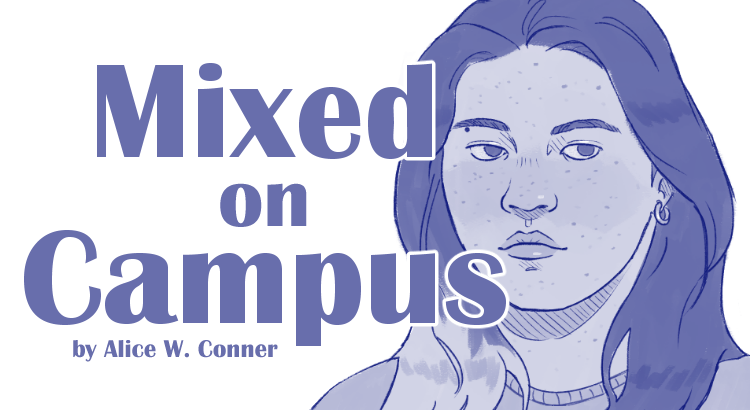Exploring UMMA is one of my favorite things to do in my spare time. I enjoy wandering in the quiet and cozy museum, stopping by whichever painting that draws my attention, and trying to appreciate it by looking closely at it and reading the label. However recently, rather than try to learn more about each painting, I found a more interesting thing to do: to look at several paintings together, to compare them and to find the subtle similarities or underlying relationships among them. Today for my little themed tour, I picked four portaits in UMMA, in each of which the costumes of the figures can tell us the story behind the painting itself.
The first painting I’m gonna introduce is Portrait of a Lady by Johann Tischbein, which is located in the European Gallery on the first level. It is a portrait of a well-dressed lady. We can see her elegant blue silk dress with delicate lace cuffs, her resplendent earrings and necklace, her elaborately braided hair and the matching hair ornaments. Although we don’t know her exact identity, but from her costume we can infer that she is a lady from high social class. She is also holding a fan in her right hand, which may give us a clue of the fashion trends back the time she lived. Fans became fashionable decorations for women in 18 centuries and can be seen in many portraits in that period. Ladies used fans not only to cool themselves but also to enhance body languages.

Right next to this portrait is another portrait of a man. Like the lady in the former painting, he is also dressed in a sumptuous way. His red coat and waistcoat seem to be velvet, with rich gold embroideries on them. His powdered wig is also noteworthy. Pamela Reister, one of the curators in UMMA, once told me that the size of the wig could reflect the man’s rank to some extent. She said bigger wig would suggest higher social rank of the wearer, and was also considered to be more fashionable. The identity of the figure is indeed Pierre Bachelier, the director of customs at Lyon, according to the title of this painting. Therefore, the outfit of the figure in this painting can tell us much about his profession and also his social status.

One of the most eye-catching pieces in the apse is Portrait of Maximilien-Sébastien Foy by Baron François Gérard. Maximilien Foy was a French general and statesman. According to the label, Gérard painted this portrait after the death of General Foy, in other words, the painter didn’t have General Foy posing for him as a model but painted this portrait based on his memory. Thus, the choice of the painter to paint the general in French army uniform could be explained as an attempt to emphasize the figure’s identity as a former military leader. His cloak billowing to the wind reminds us of the famous portrait of Napoleon by David, who was shown as confident and ambitious. The medals on his uniform imply the honors he received as a general, who was severely wounded 15 times and eventually died on the battlefield.

Costumes could be deceptive sometimes, too. If you go upstairs and turn right, you would easily spot a portrait on the balcony of a woman in a blue dress. The lady is shown in a elegant position, with her head raised a little bit and his eyes confronting the viewer with confidence and dignity. Her dress doesn’t even look outdated now, which was probably of the highest fashion back the time the painting was made. However, if you are guessing she was a bourgeois woman, you would be surprised to find out that she was actually a working class widow who could find no other jobs but modeling for the painter. She was in poor health and could hardly pay for the medicine or support her two children. The discrepancy between her dress and her actual identity makes this painting more intriguing and thought provoking for the viewer.

Ok. Here ends my special tour of UMMA:) Btw, you are welcomed to come to UMMA After Hours this Friday (which is Oct.15 and I’m gonna be a volunteer, too!). And if you come, don’t forget to check these paintings out!










